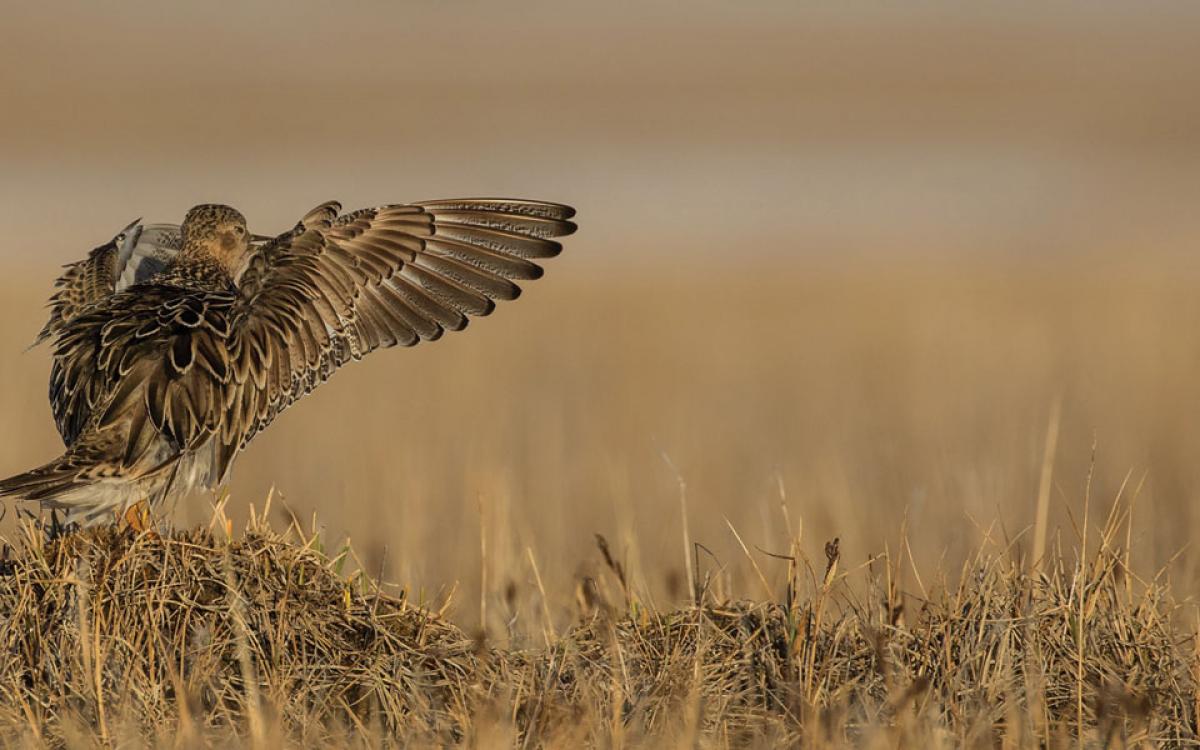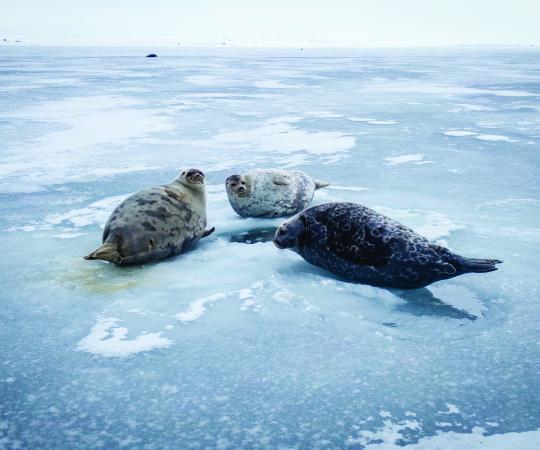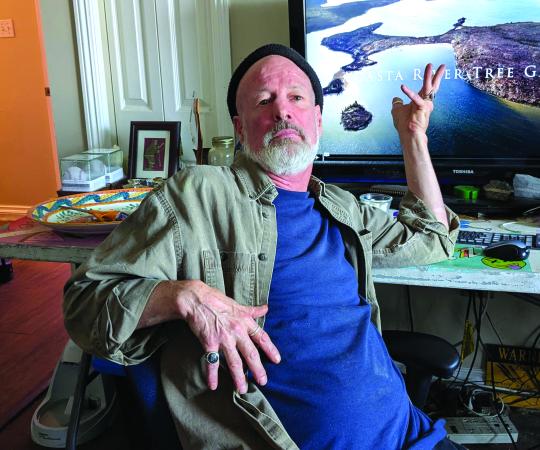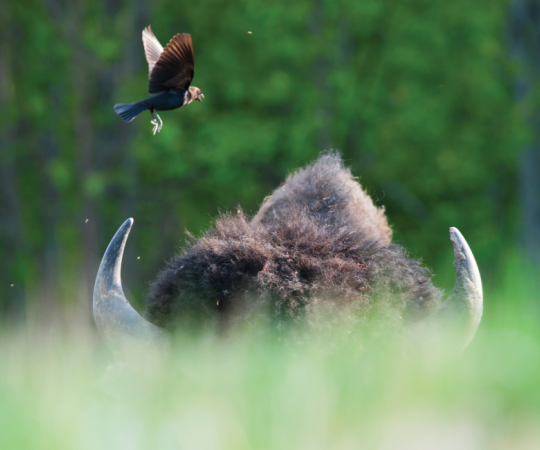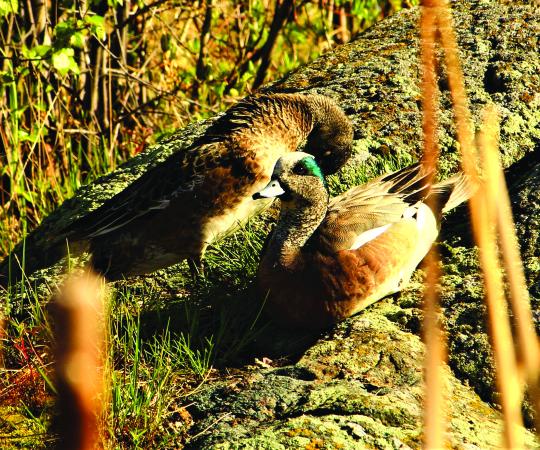The Buff-breasted sandpiper just wants to dance.
That’s because it’s the only North American male shorebird that struts its stuff to impress the ladies in a mating ritual called lekking. About 42,000 birds migrate north from South America each year to breeding sites in the Queen Maud Gulf Migratory Bird Sanctuary in Nunavut, Aulavik National Park in the Northwest Territories and Ivvavik National Park in the Yukon.
And that’s when they hit the dance floor—or, in this case, the tundra and grasslands that make up their breeding grounds. The male will bob his head and hop in circles before dramatically stretching his wings out, lifting his beak into the air as if to beckon all to bow down before him. Or, in a move shamelessly imitated by John Travolta back in his Saturday Night Fever days, the bird will thrust one wing and then the other in the air, before twirling seductively. Similarly, these moves entice many females. Some males will dance in small areas, around 10 to 50 metres in diameter, while others strike out to dance far and wide, up to 1 hectare in range until females gather to watch and decide who will take him up on his offer. After mating, the male will leave to find new ladies to beguile.
But these tundra and grass dance floors are under threat. That has bird-lovers like Bruce Bennett, with the Yukon Conservation Data Centre, worried. Grasslands are being transformed into shrubbery as a result of climate change. “Many of their lekking sites are now disappearing under shrubs, so they can’t dance, and they can’t breed,” says Bennett.
And with mining and exploration work encroaching on these landscapes, Buff-breasted sandpipers are being squeezed out. “We’re lucky in the Yukon that our tundra areas on the North Slope are largely protected,” says Pam Sinclair, a bird conservation biologist with the Canadian Wildlife Service. In Alaska, where the birds also dance, that isn’t the case. “Protected areas are very important for these birds.”
If the dancing ever stops, it stops for good.

